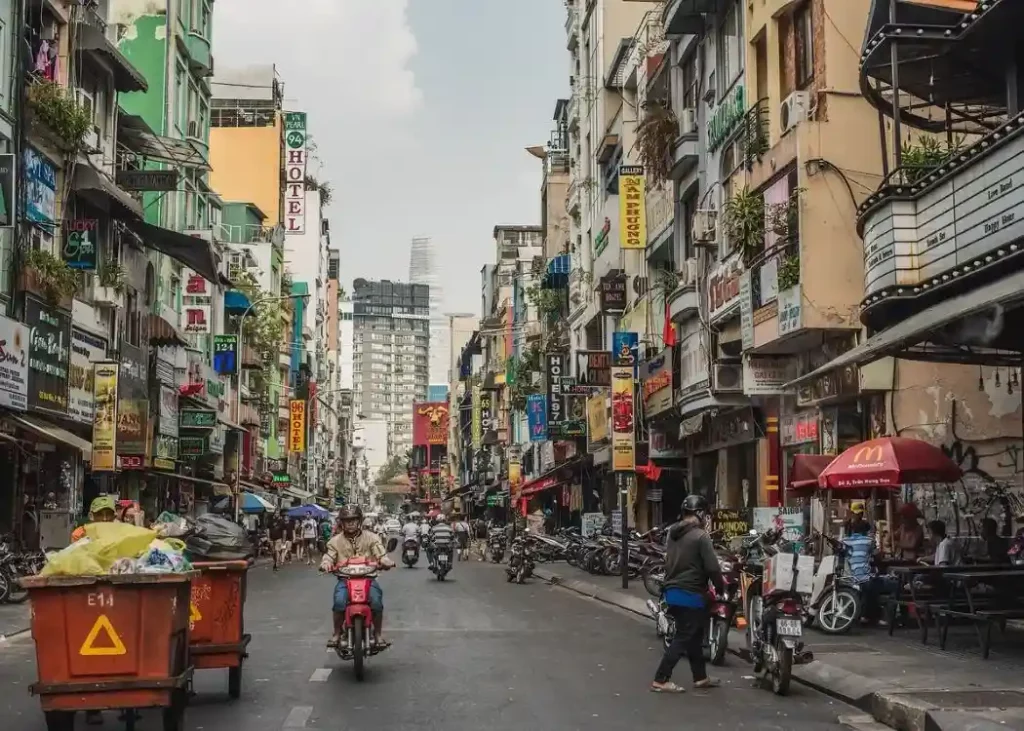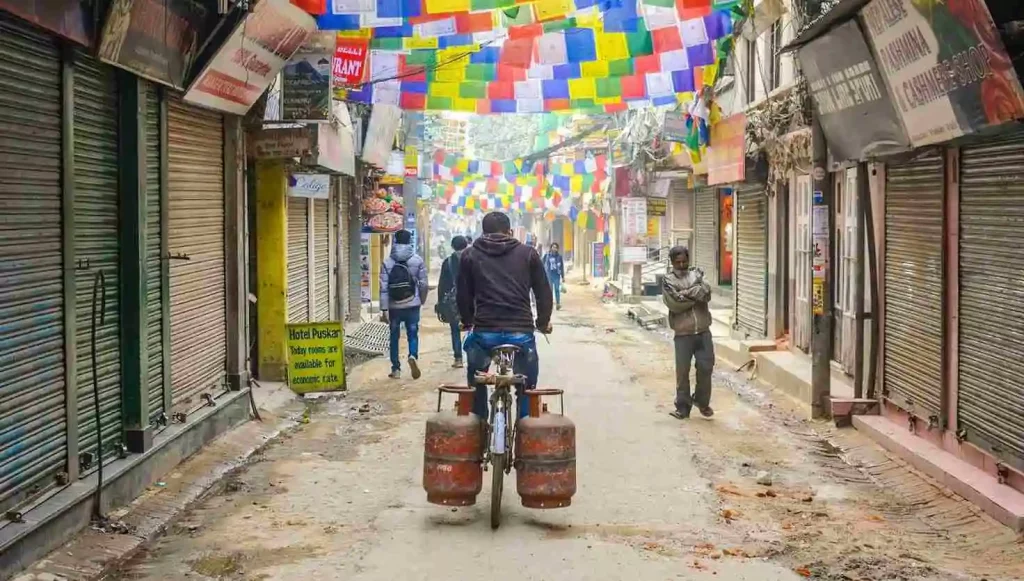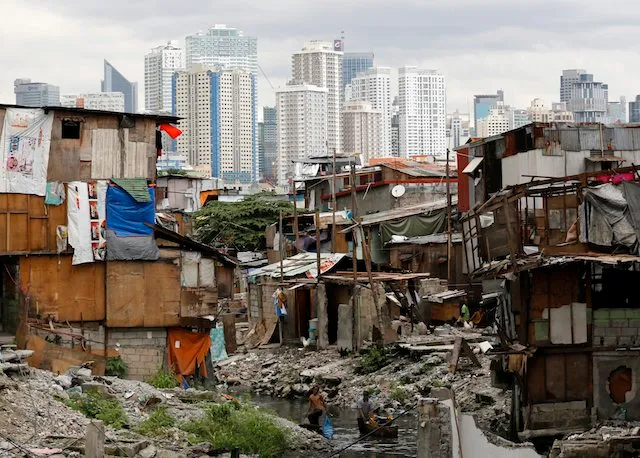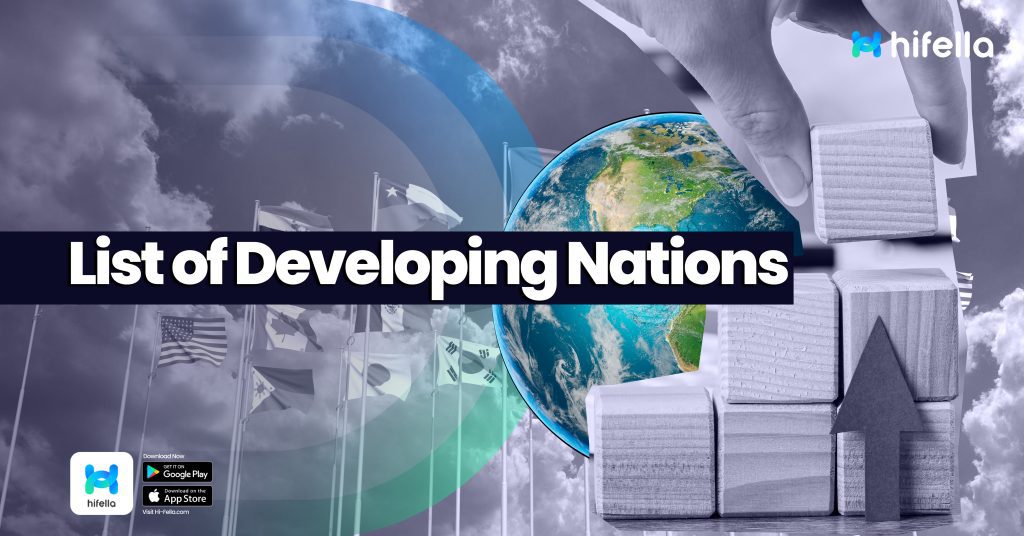Table of Contents
Knowing about developing countries is crucial to understanding the current global socio-economic challenges.
Therefore, in this article, we will learn about the characteristics of developing countries, their challenges, and how they are on their way to becoming more developed countries.
Understanding Developing Nations

Source: The Boutique Adventurer
Developing countries, often synonymous with “least developed countries” or “low- and middle-income countries”, stretch across continents, each with a unique path to development.
The United Nations (UN) categorizes countries based on economic and social indicators, offering a comprehensive list that serves as a starting point for understanding the global distribution of development.
List of Developing Nations
Here is the list of developing nations according to Investopedia:
1. India
India, with a GDP of $3.39 trillion and a population of 1.42 billion, has a low GDP per capita of $2,388, showing its status as a developing country.
Despite being a major global economy, India’s large population means its wealth is spread thinly, leading to widespread poverty, sanitation issues, and overpopulation.
India’s economy is diverse, spanning traditional farming to high-tech industries, making it a key player in IT and software exports. However, challenges like high infant mortality at 26 per 1,000 live births highlight ongoing health issues.
2. Indonesia
Indonesia, the largest economy in Southeast Asia and the world’s most populous Muslim-majority country, has a GDP of $1.32 trillion and a population of 275.5 million.
Its GDP per capita stands at $4,788. Indonesia faces natural disaster risks due to its location in the Pacific Ring of Fire and struggles with access to safe water and sanitation, affecting millions. Life expectancy is 68 years, with a high infant mortality rate of 19 per 1,000 live births.
3. Mexico
Mexico’s economy is relatively advanced within the developing world, with a GDP of $1.41 trillion and a population of 127.5 million. Its GDP per capita is $11,091. Mexico outperforms many developing countries in economic and life quality metrics but still faces challenges like poverty and healthcare access.
Life expectancy is 70 years, and the infant mortality rate is 11 per 1,000 live births, indicating progress yet room for improvement.
4. Saudi Arabia
Saudi Arabia, with a GDP of $1.11 trillion and a population of 36.41 million, has a high GDP per capita of $30,436 but remains a developing country due to its oil-dependent economy.
It’s the largest petroleum exporter yet faces criticism for human rights issues. Saudis enjoy a relatively high life expectancy of 77 years and a low infant mortality rate of six per 1,000 live births.
5. Thailand
Thailand, the second-largest economy in Southeast Asia, has made significant progress, moving from a low-income to an upper-middle-income status. With a GDP of $495.34 billion and a population of 71.7 million, its GDP per capita is $6,908.
Thailand’s economy benefits from diverse exports like electronics and agriculture. It boasts a high life expectancy of 79 years but has a concerning infant mortality rate of seven per 1,000 live births.
Characteristics of Developing Nations

Source: Breeze Technologies
According to Enotes World, here are the characteristics of developing nations that you should know about:
Economic Indicators of Developing Nations
1. Low Income and Investment
Developing countries have significantly lower average incomes than developed countries. This low per capita income leads to minimal savings and investment, trapping these nations in a cycle of poverty.
2. Population Growth and Economic Pressure
High population growth in developing nations, driven by factors like high child mortality rates and the absence of family planning, puts additional economic pressure on these countries. More children are often seen as a way to increase income despite the conservative social norms.
3. Employment Challenges
Developing nations face high levels of unemployment and underemployment due to reliance on agriculture, insufficient industrial development, and inadequate job creation. This forces many to accept low-quality jobs, particularly in rural areas.
4. Agricultural Dependence
A large portion of the population in developing countries relies on agriculture for income and employment, contributing significantly to their GDP but also limiting economic diversification.
5. Technological Gaps
These countries often use outdated technologies, resulting in inefficient production and low GDP. Factors like illiteracy and lack of capital prevent the adoption of modern technologies.
6. Economic Dualism
Developing countries demonstrate a huge gap between developed urban sectors and underdeveloped rural areas, with most of the population engaged in low-productivity agricultural activities.
7. Lack of Infrastructure
Poor development of critical infrastructure such as transportation, communication, and electricity has significantly delayed growth in these countries.
8. Low Productivity
Factors such as malnutrition, inadequate healthcare, and poor living conditions contribute to low productivity levels in developing countries.
9. Consumption vs. Saving
The low income in developing nations leads to a higher consumption rate and lower savings, making capital formation difficult and increasing reliance on foreign aid and remittances.
Social Indicators of Developing Nations
1. Poverty
The majority of people in developing countries struggle to meet their primary needs due to low incomes, reflecting broader issues such as illiteracy, unemployment, and lack of socioeconomic participation.
2. Unemployment and Social Inequality
Job scarcity and dependence on subsistence agriculture serve to further social inequalities and limit opportunities for economic participation.
3. Health and Education
Limited access to health and education services further compounds social inequalities and prevents individuals from escaping the cycle of poverty.
4. Technological and Educational Barriers
Lack of modern technology and educational opportunities impede social mobility and development, maintaining the status quo of inequality.
Challenges in Developing Nations

Source: HS Insider
Developing nations encounter several economic hurdles that hinder their progress towards prosperity and stability. Key challenges include:
1. Low Income and Investment
The average income per person is often low, restricting the ability to save and invest. This leads to a cycle of poverty, where low investment in businesses and infrastructure further limits economic growth.
2. Dependence on Agriculture
Many developing countries rely heavily on agriculture, which can be vulnerable to climate change, natural disasters, and fluctuating commodity prices, making their economies particularly unstable.
Read more: How to Trade Commodities? Explore The Most Exchange of Goods in Our World
3. Limited Industrialization
There’s often a lack of diversified industries, leaving these nations dependent on a narrow range of exports. This limits their ability to generate sustainable income and create jobs.
4. High Debt Burdens
Developing nations frequently face substantial external debts, which consume a significant portion of their GDP in repayments, limiting funds available for essential development projects.
5. Inflation and Currency Fluctuations
High inflation rates and unstable currencies can erode purchasing power and deter foreign investment, further straining their economies.
Social Challenges and Human Development
On the social front, developing nations grapple with issues that not only affect their economic prospects but also the well-being of their citizens:
1. Poverty
High levels of poverty impact millions, limiting access to basic needs such as food, shelter, and clean water. The inability to meet these needs perpetuates a cycle of poverty across generations.
2. Education and Literacy
Limited access to quality education and high illiteracy rates restrict personal and national development. Education is crucial for improving productivity, innovation, and economic growth.
3. Access to Health
A poor healthcare system leads to high infant mortality and low life expectancy. Poor health outcomes can significantly impact labor productivity and economic development.
4. Gender Inequality
Women and girls often face significant barriers in accessing education, healthcare, and employment opportunities. Gender inequality not only affects individual women but also hinders overall economic and social development.
5. Urbanization and Infrastructure
Rapid urbanization without adequate planning leads to overcrowded cities, inadequate housing, and strained infrastructure. This can result in increased pollution, health issues, and a lower quality of life.
6. Environmental Degradation
Developing countries often face severe environmental challenges, including deforestation, pollution, and the impacts of climate change. These issues can destroy natural resources and livelihoods, further complicating development efforts.
Resolving these economic and social challenges requires a multi-faceted approach, including international cooperation, investments in education and healthcare, gender equality initiatives, and sustainable economic policies.
By addressing these issues, developing countries can pave the way for improved living standards and a more secure economic future.








